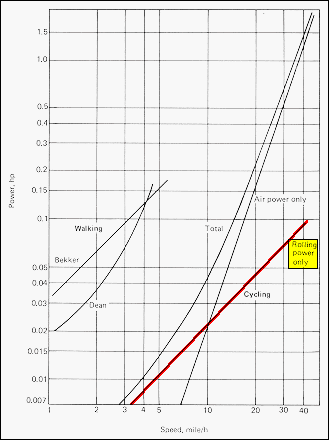| |
Rolling
Resistance
When
a wheel rolls on a surface energy is dissipated. Several
sources of energy loss are active: i) work due to the flexing of the tire
as it contacts the ground, ii) work due to the deformation of the "ground,"
iii) work due to tire friction during tire slip, and iv) work due
to aerodynamic forces acting on the wheel. All these processes are grouped
as "Rolling Resistance."
If both the wheel and the surface
are nominally rigid, as in the case of a steel wheel riding on a steel rail,
the total energy loss is small and the rolling resistance is low. When elastomers
are used to fabricate pneumatic tires, the energy loss in rolling on a
rigid surface increases due to dissipation mechanisms in the tire material, (i).
These losses depend on tire pressure and wheel diameter.
At low
speeds, the rolling resistance dominates the energy losses in the bicycle system
as shown in the graph. The power required to overcome the essentially velocity
independent resistance force increases linearly with speed. At 17 km/h
about 15 W is needed. At high speeds, aerodynamic forces are normally dominant
and this power dissipation increases as the cube of the speed. |
|
|
|
|
|
|
|
|
|
|
|
|
|

